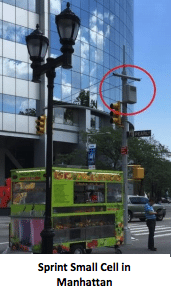The Wireless Broadband Alliance (WBA) has published guidelines for a new ‘internet of things’ (IoT) roaming framework, based on an extended version of its own Wireless Roaming Intermediary eXchange (WRIX) specification for Wi-Fi roaming capabilities.
IoT roaming is being accomplished today on different types of networks, such as cellular and Wi-Fi. With increasing numbers and varieties of IoT devices, interoperability is required to allow cross-network roaming of devices and avoidance of “islands of connectivity”, the WBA says in a new report.
Wi-Fi roaming capabilities could help with the evolution of IoT device roaming, the WBA reckons. Its WRIX specification, facilitate roaming between operators, supports IoT device interoperability, including challenges with authentication, security and billing, and provides a dynamic way for devices to search for a network and roam at scale without intervention.
The WBA’s new report on IoT interoperability focuses on the common requirements to enable IoT devices to connect to a non-home access network, authenticate, enable accounting and facilitate subsequent billing while taking into consideration potential security and scalability concerns.
The study outlines how WRIX can be used across the IoT market. The latest release of WRIX includes support for EAP authentication for transport. The WBA has urged operators to prepare their networks to facilitate simple, seamless and secure IoT connectivity for users.
WBA general manager Tiago Rodrigues said: “Cross-network device roaming is becoming increasingly important to fulfil the vast scalability requirements of the IoT. Yet deploying IoT roaming services is no easy feat, and the process will take several years. The industry must work together, which is why the WBA is advocating the use of WRIX to provide industry-wide standards for service providers.”
The WBA is also in discussions with industry alliances including the LoRa Alliance, the MulteFire Alliance, and eduroam regarding the development of a roaming framework for specific IoT technologies similar to the WRIX approach for Wi-Fi roaming.
Analysys Mason forecasts low-power wide-area (LPWA) technologies will generate $5 billion globally in connectivity revenue by 2025. By 2022, Strategy Analytics estimates network operators could generate more than $13 billion from LPWA connectivity, as well as significant additional revenues from value-added services, such as data analytics and security.

